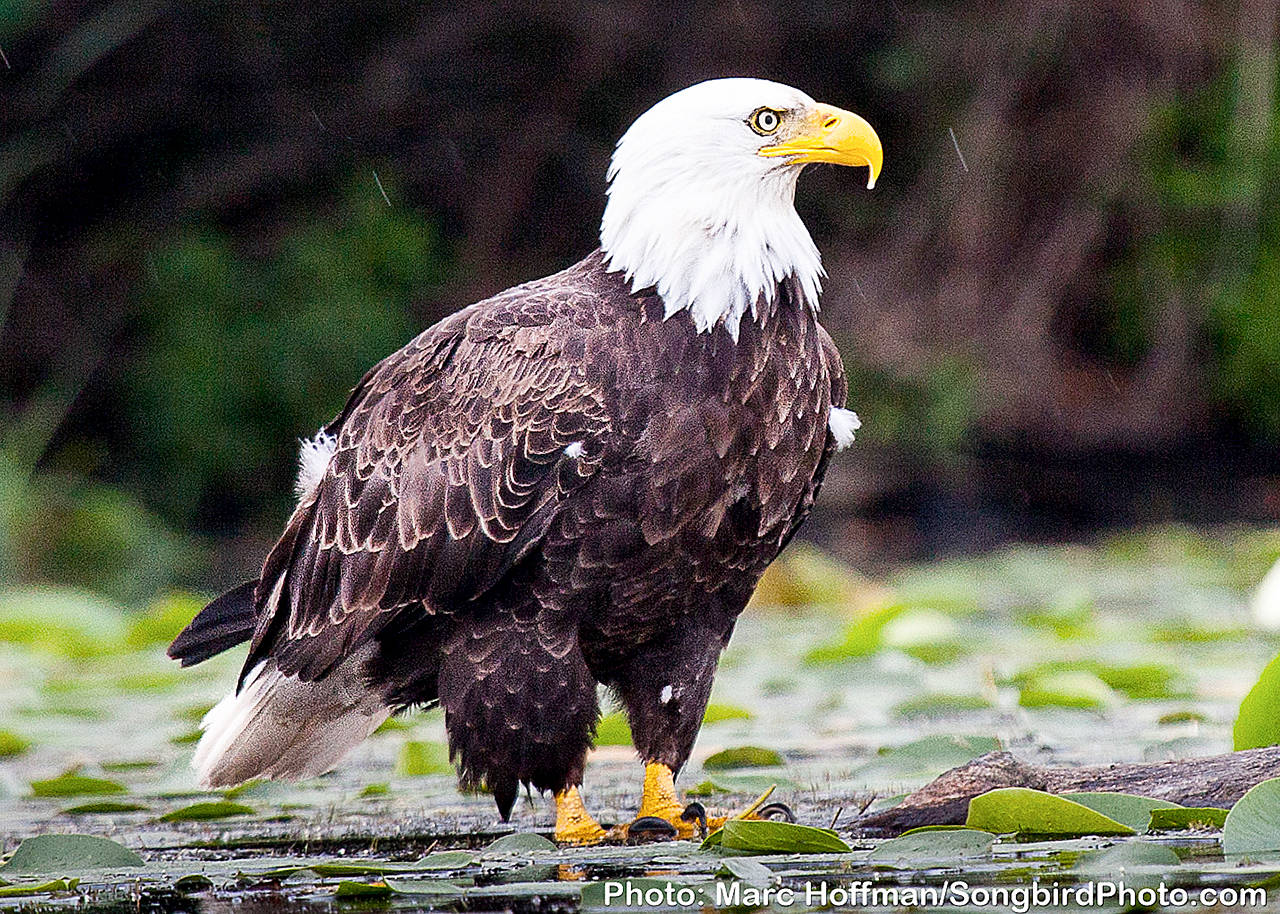By Tina Blade
Contributing Writer
There are as many reasons to turn your attention to the Snoqualmie River Valley’s birds as there are birds to see here. And with its varied habitats of farmlands, forests, and wetlands, the Valley is a prime location for a variety of birds throughout the year.
One beautiful example is the Bullock’s Oriole. As you walk the Snoqualmie Valley Trail near Stillwater on a summer morning, you hear it first—a series of raspy calls and descending whistles coming from high in the cottonwood canopy. Following the sound, you look up, and catch a flash of flame-orange and black among the leaves. Then you see it, the male Bullock’s Oriole bringing an insect to the woven pouch of nest that hangs from a branch high above the trail.
On such a day, the trees, forests, and fields throughout the Valley are full of birds busily singing, moving about, and making a living.
Besides the Bullock’s Oriole, you might see Yellow and Wilson’s Warblers, the sky-blue Lazuli Bunting, Rufous Hummingbirds, Black-headed Grosbeaks, and the diminutive Common Yellowthroat in his bright yellow bib and black mask.
You are more likely to hear than see the shy Swainson’s Thrush. Russet brown with a delicately spotted breast, it blends perfectly into the woodland shadows. But its sparkling, water-like song is one of summer’s loveliest treasures.
Many of these birds are neotropical migrants that winter in Mexico, Central and South America and the Caribbean, then fly north to mate, nest, and raise their young.
You know it’s spring when you begin to hear them setting up and defending their territories in places like Rattlesnake Lake, Three Rivers Natural Area, Carnation Marsh Natural Area, Tolt-McDonald Park, the Stillwater Unit of the Snoqualmie Wildlife Area, and the farm fields and forests from North Bend to Monroe.
But spring and summer are not the only times of year the Valley offers excellent birding. In addition to the spots already mentioned, Sikes Lake, Chinook Bend Natural Area and Carnation Farm Road are all prime locations for winter birding. And thankfully, when the temperatures drop, much of this can be done from the car. On a winter’s-day drive through the Valley, you can find flocks of Trumpeter and Tundra Swans and wintering ducks in local pastures and ponds. You can also see year-round and wintering raptors, including Rough-legged and Red-tailed Hawks, Peregrine Falcons, Bald Eagles, and even the occasional Golden Eagle–perched on wires, power poles, and snags along the road.
In wooded habitats, you can hear the high, sweet calls of Ruby-crowned and Golden-crowned Kinglets flitting in the branches above. In the understory, the delicate song of the Pacific Wren spirals upward, almost out of the range of human hearing. And the taps of woodpeckers are ubiquitous.
While it’s true that Snoqualmie Valley offers rich opportunities to observe and appreciate birds, it’s important to remember that they are not “on-demand” performers. To see them requires the time, focus, and patience to go where they might be, then allow whatever is present to reveal itself to you.
Indeed, you might find that letting go of everyday concerns and tuning into the bit of wildness around you can be its own reward.
There’s also an undeniable thrill when your diligence pays off and you finally catch sight of a beautiful songbird carefully tending its young. Or an eagle who’s been sitting high in tall snag suddenly swooping down from its perch, grazing the surface of a lake, then rising with a freshly caught fish in its talons.
This article is based on the author’s personal experiences of birding in the Snoqualmie Valley combined with information from A Birder’s Guide to Washington, 2nd Edition (2015), Jane Hadley, ed.
Tips for Successful Birding
Dress for the season, weather, and terrain. Wear comfortable, water-repellent shoes or boots and layers of clothing you can peel off as the day warms up.
Wear a baseball cap or hat with a brim. This helps shade your eyes as you look up into the trees and sky.
Bring binoculars and/or a spotting scope. These are a must if you want to get clear looks at the birds you find. A camera can also be helpful for identifying birds later.
It’s best to leave your dog at home. But if you do bring your dog, be sure to use a leash and doggy bags. The areas mentioned require this. What’s more, birds and other wildlife are easily disturbed by a dog that’s running loose in the underbrush along the trail.
Bring a Discover Pass (http://www.discoverpass.wa.gov) if you plan to park in a WDFW Wildlife Area lot such as Stillwater or Crescent Lake.


